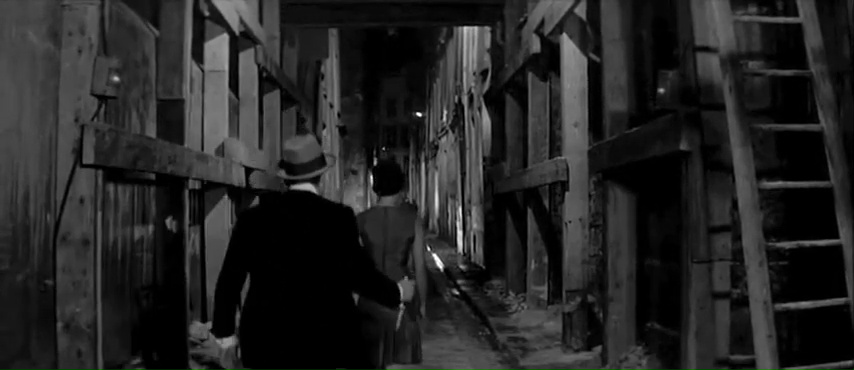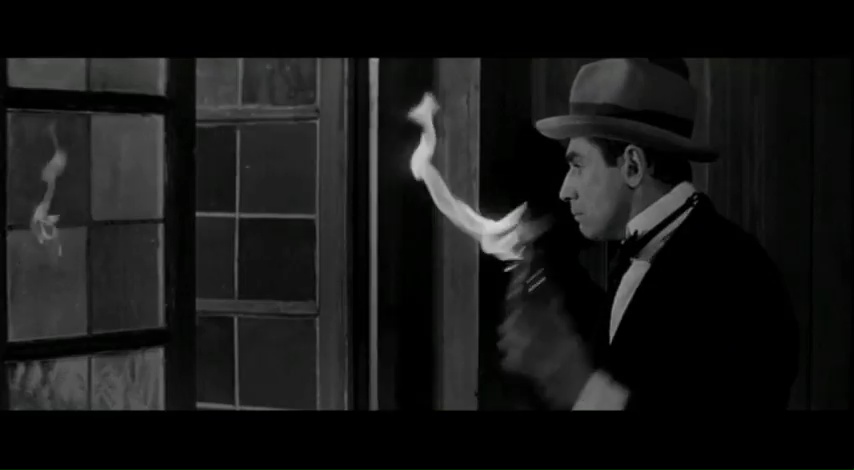Peter Kürten was a German serial killer, often called “The Vampire of Düsseldorf” and the “Düsseldorf Monster”. Described as “the king of sexual perverts”, Kürten was beheaded in July 1931 at the age of 48.
He perpetrated at least nine murders and a number of sexual assaults between February and November 1929 in the city of Düsseldorf. Previous to this, Kürten had accrued a long criminal record for offences including arson and attempted murder. He also confessed to the 1913 murder of a ten-year-old girl in Mülheim am Rhein and the attempted murder of a 17-year-old girl in Düsseldorf.

Kürten was called the “Vampire of Düsseldorf” because he occasionally drank the blood of his victims. He was also known for decapitating swans in the Düsseldorf Hofgarten to drink their blood.

This week’s movie, The Vampire of Düsseldorf or, in French, Le Vampire de Düsseldorf, was a joint production between Spain, France and Italy, filmed in 1964. Fritz Lang’s 1931 film M – Eine Stadt Sucht Einen Mörder was loosely based on Kürten (who had been beheaded the year the film was made), but also on the other German serial killers of the time: Haarmann, Großmann, and Denke. Fritz Haarmann had killed at least 24 boys and young men between 1918 and 1924, often by biting their throats, and then allegedly eating or selling the meat from their corpses as pork or horse-meat. Carl Großmann was arrested in 1921, suspected of up to 100 murders of women and girls, whose flesh he was supposedly selling on the black market and from a hot-dog stand in Berlin during the Great War. Karl Denke killed and sold the flesh of dozens of homeless vagrants and travellers from 1903-1924. So Peter Kürten was far from unique in famine-stricken Germany between the wars.

The Director of this film, Robert Hossein, cast himself in the title role of this and several of his films, which is not that unusual among auteur filmmakers. He didn’t look much like Peter Kürten, who was a remarkably nondescript individual (as are so many modern, domestic cannibals), but that’s not the problem. The film twists the story but ends up turning it into a fairly pedestrian slasher rather than the psychological profile of a cannibal serial killer, which it could have been. It also sanitises the story, ignoring the many murdered children and in fact the whole aspect of cannibalism by clinical vampirism (his consumption of blood).
Kürten started his killing well before anyone had heard of Hitler, and even before the First World War, which led to the economic crises that presaged fascism. But by 1929, when most of Kürten’s murders took place, the darkened streets of German cities were full of violence: fascists battling communists, unemployed workers demanding bread and work, and killers like Kürten taking advantage of the chaos.


It is not therefore totally unfair for the film to present Kürten as the embodiment of the sickness that led to the growth of totalitarianism. We see several faces of Europe between the wars – Kürten helping an old neighbour with her groceries, the crowded music halls so popular in Weimar Germany, and the killer, still dressed as respectable citizen, stalking the streets. Kürten, had he survived a bit longer, might have made a very powerful Nazi, with his penchants for smart clothes and extreme violence.



The plot is much simplified. Kürten kills young women and writes letters to the police boasting of his exploits (much as Jack the Ripper did around forty years before him).

He falls in love with a nightclub singer, Anna, who mocks him, sparking his misogynistic rage. He meets two young girls from the countryside who should know better than to open their doors to strangers.


Anna eventually becomes his lover, but then she finds the latest letter he is writing to the police.

Anna must die, much to Kürten’s regret, and his rage is expressed in arson attacks on the nightclub.


The real Kürten was of course a serial killer whose toll was far higher, and whose preferred victims were often very young girls. He was also an arsonist, and he achieved orgasm both through the act of killing and the burning of the body or buildings. Murderpedia has a full account of his acts if you want to read further. It’s pretty gruesome.

Little attempt is made in the film to portray the real Kürten, and even less to explain why he was the way he was. But the film was made in 1965 when sensitivities were somewhat more pronounced than now, particularly in Germany which had only shed the Nazis twenty years earlier. But it’s a masterfully made film, and the music by Hossein’s father, André, is particularly affecting. Worth seeing, if you can lay your hands on it.
As he was led to the guillotine, Kürten asked the prison psychiatrist,
“Tell me, after my head has been chopped off will I still be able to hear; at least for a moment, the sound of my own blood gushing from the stump of my neck? …That would be the pleasure to end all pleasures.”
After he was beheaded, Kürten’s head was preserved and his brain removed for examination, to see if there were any anatomical anomalies (there weren’t). The mummified and bisected head can still be viewed, if you feel so inclined, in the “Odditorium” of Ripley’s Believe It or Not! At 115 Broadway, Wisconsin Dells.


